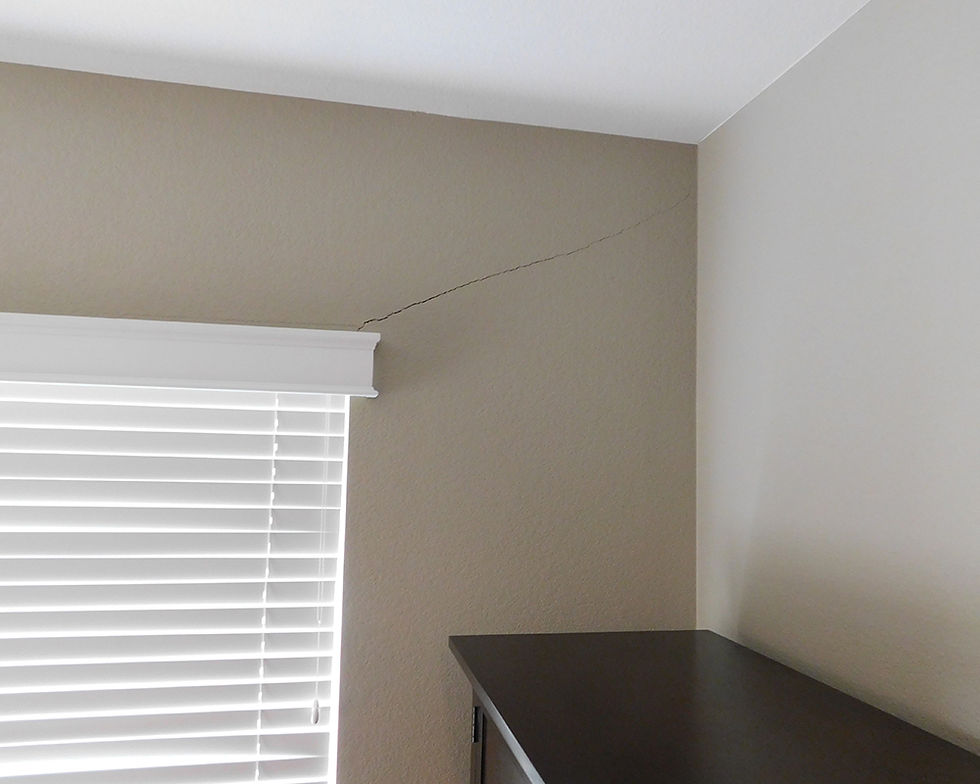Visible damage to a home can be very stressful for the homeowner. If you think structural damage is happening to your home, step one is to hire a licensed structural engineer to document the conditions of your home. Unfortunately, having a construction professional, like a licensed contractor, evaluate your home is not helpful because they are not considered “expert witnesses” by courts.
An excellent place to find a structural engineer in your area is to get a referral from a construction defects attorney or a construction company specializing in repairing structures and sites. Also, talk to your neighbors to see if they have similar problems or recommendations.
The report prepared by the engineer should include, but not be limited to, the documentation, through notes and photos, of the following:
1. Damaged Drywall Around Windows

2. Damaged Doors

3. Damaged Drywall Around Doors

4. Damaged Interior Walls

5. Damaged Wood Trim and Tile

6. Garage Slab-on-Grade Cracking and Movement

7. Damage on Garage Walls and Ceilings

8. Water Damage in Basement

9. Cracked Foundation Walls

10. Cracked and Heaved Basement Slab-on-Grade Floor

11. Framing Damage

12. Movement of Basement Structural Floor

13. Crawlspace Problems

14. Ductwork Problems

15. Foundation Drain Sump Pit and Pump Problems

16. Grading and Drainage

17. Exterior

18. Porches and Stairs

I hope this information helps you to be able to implement a plan of action if you think your house has structural damage. Visit my photo collections page, which has examples of damage that can be due to construction defects.
Mike


Comments